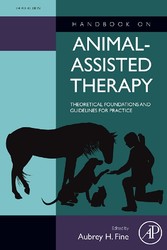Suchen und Finden
Handbook on Animal-Assisted Therapy - Theoretical Foundations and Guidelines for Practice
Mehr zum Inhalt

Handbook on Animal-Assisted Therapy - Theoretical Foundations and Guidelines for Practice
In the 10 years since the first edition of Handbook on Animal-Assisted Therapy published, the field has changed considerably. The third edition of the Handbook highlights advances in the field, with 10 new chapters and over 50% new material. In reading this book, therapists will discover the benefits of incorporating animal assisted therapy into their practice, how to design and implement animal assisted interventions, and the efficacy of animal assisted therapy with different disorders and patient populations. Coverage includes the use of AAT with children, families, and the elderly, in counseling and psychotherapy settings, and for treating a variety of specific disorders.
* Includes coverage of the use of cats, dogs, birds, and horses
* Discusses the 'why' to use animals in therapy as well as the 'how'
* Covers the use of animal-assisted therapy with different special populations and to treat different disorders
Alle Preise verstehen sich inklusive der gesetzlichen MwSt.





















